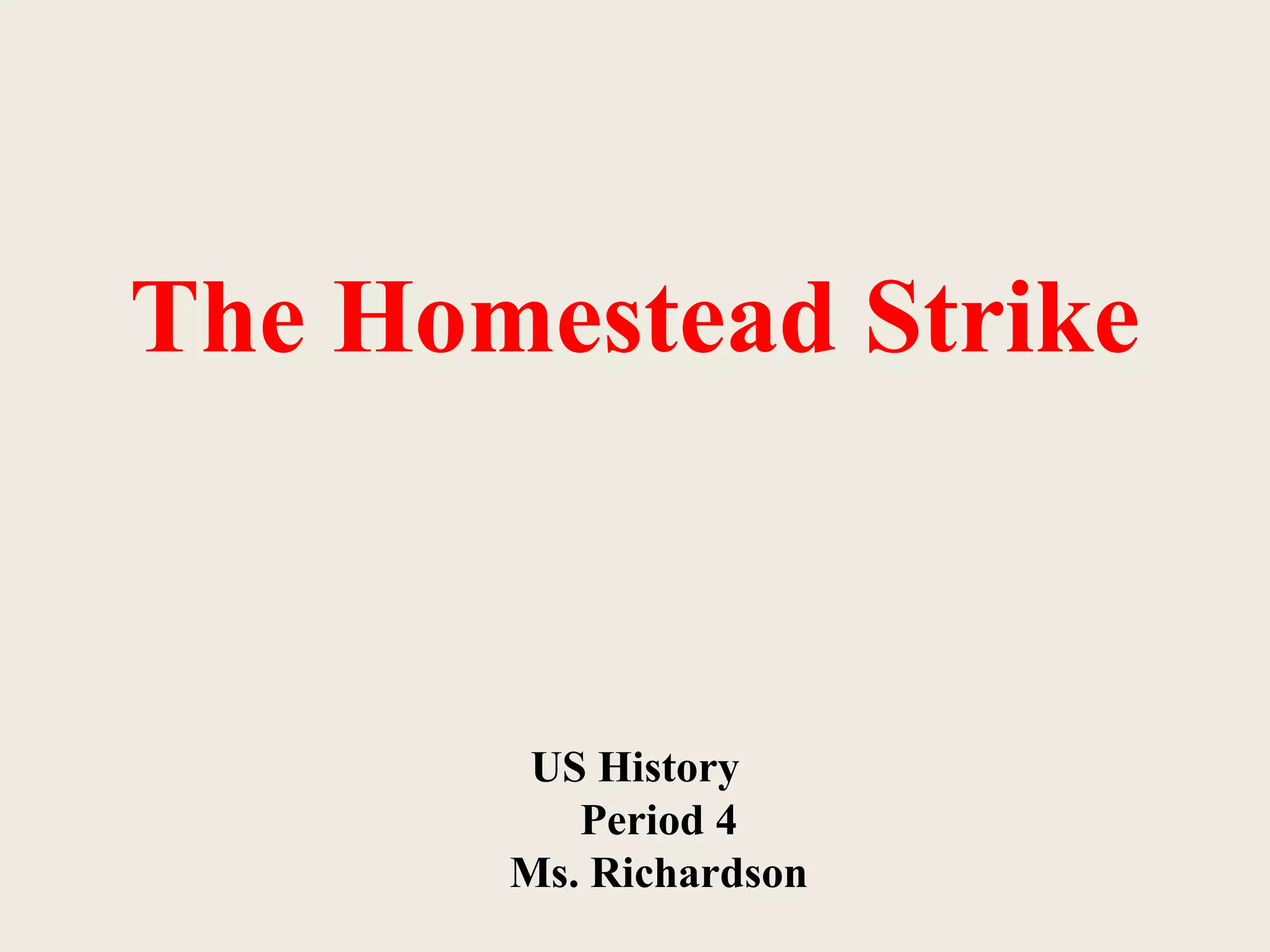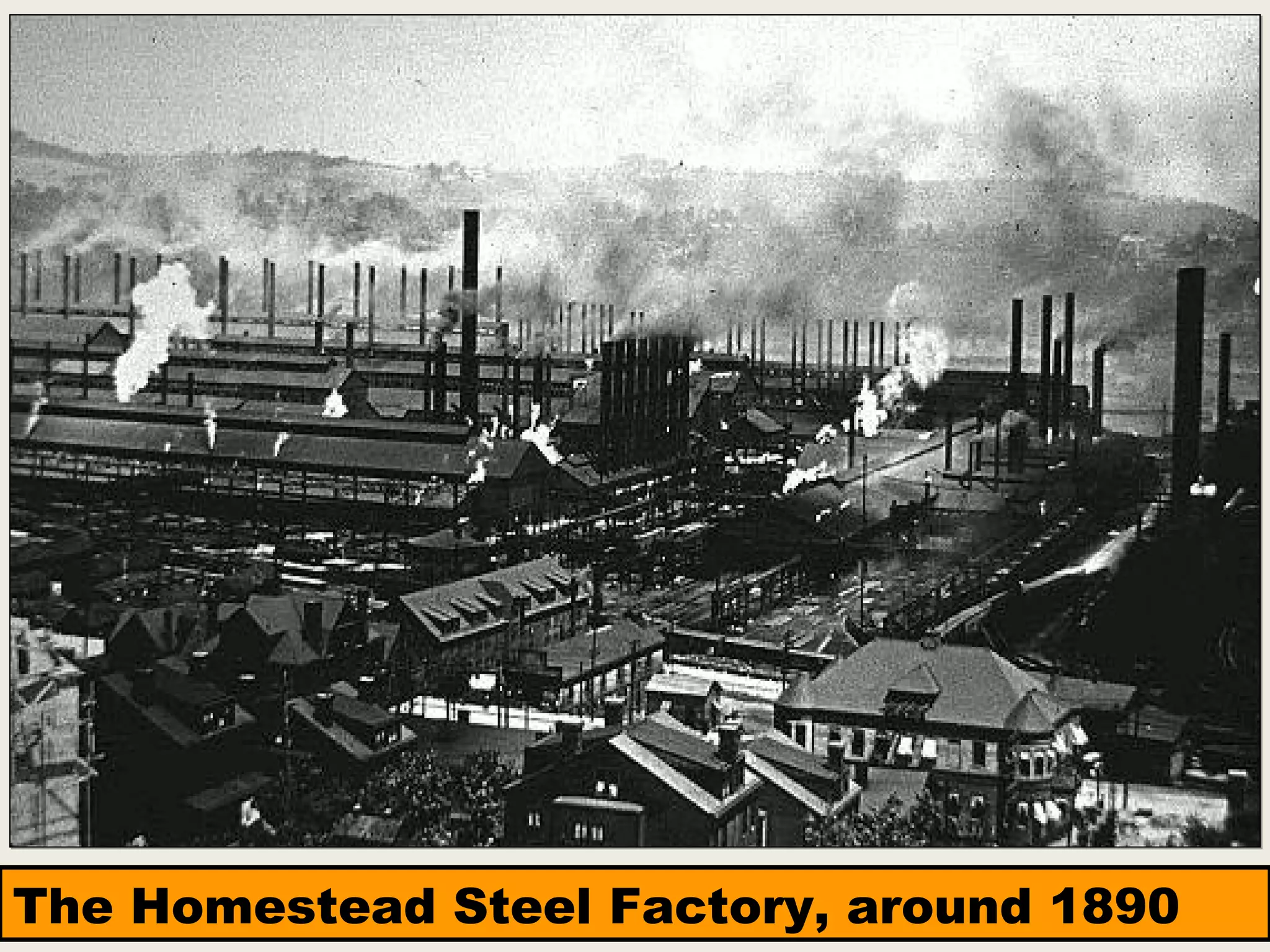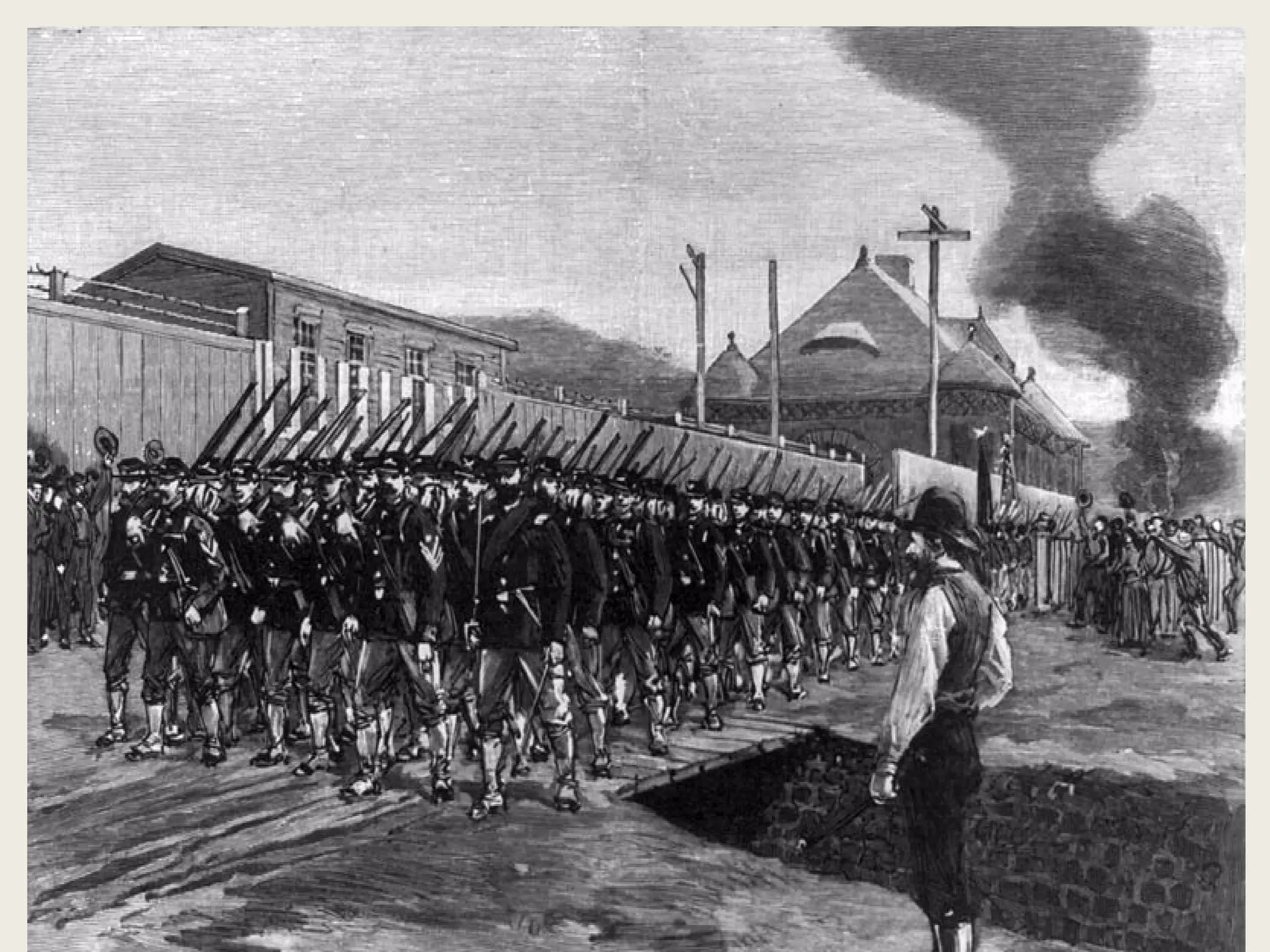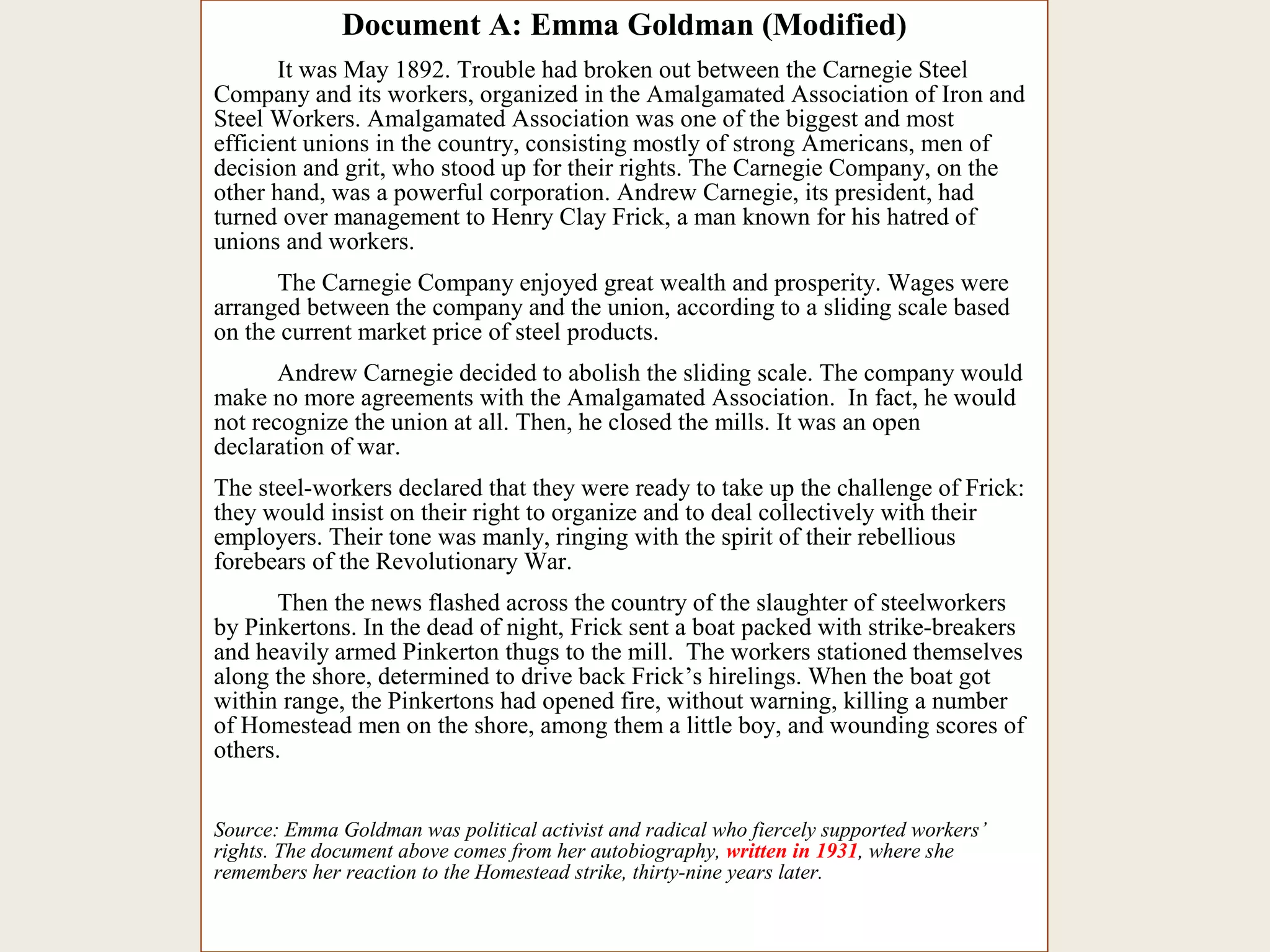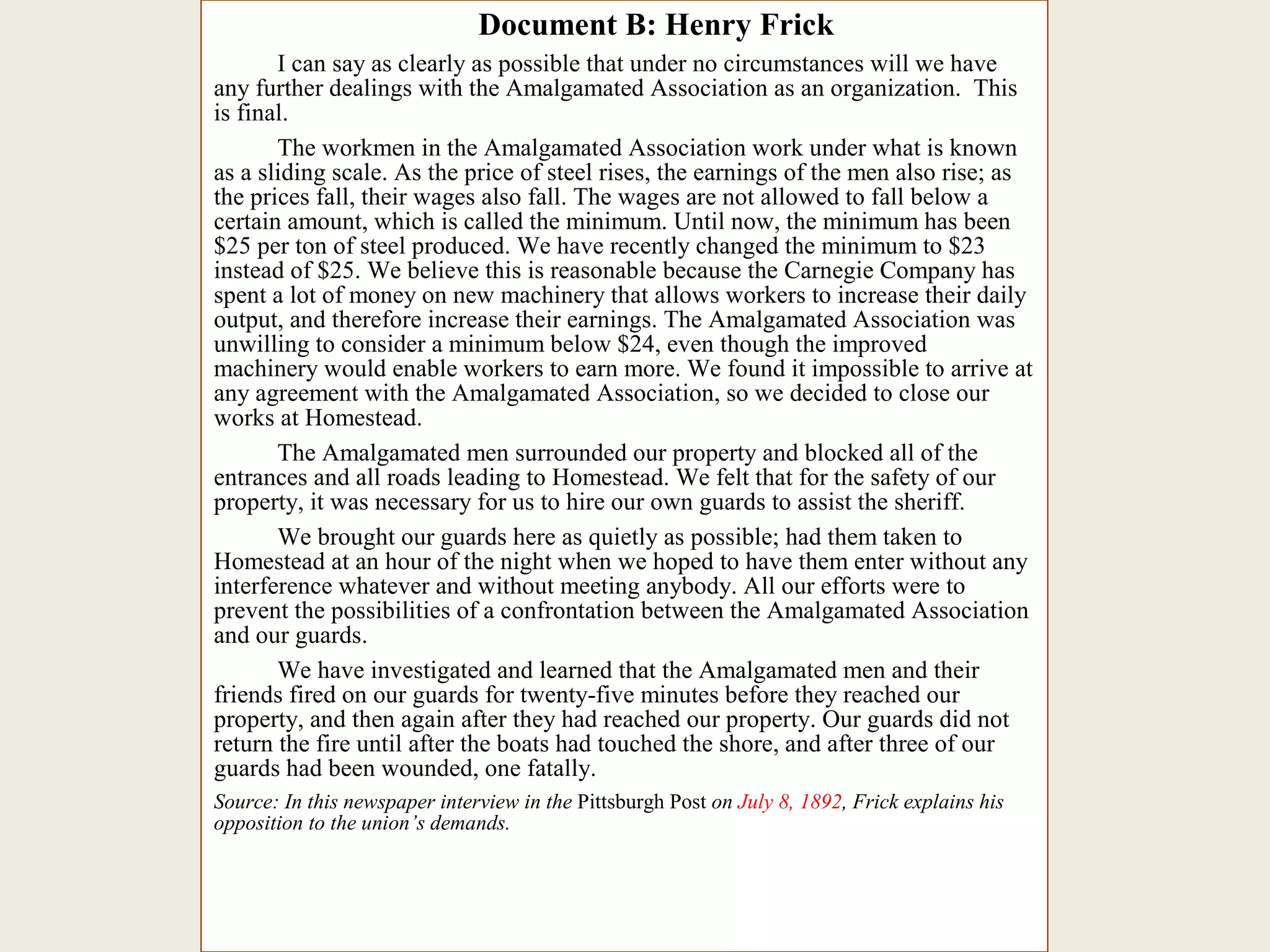The Homestead Steel Strike of 1892 began when the Carnegie Steel Company, led by Henry Clay Frick, refused to negotiate a new contract with the Amalgamated Association union after their previous contract expired. Frick sought to break the union by hiring armed private security guards known as Pinkertons to cross the union's picket line and take control of the steel mill. When the Pinkertons arrived by boat, a violent clash ensued that left multiple union workers and guards dead. The strike lasted several more months until the union was finally broken by Frick and the Carnegie Steel Company.
